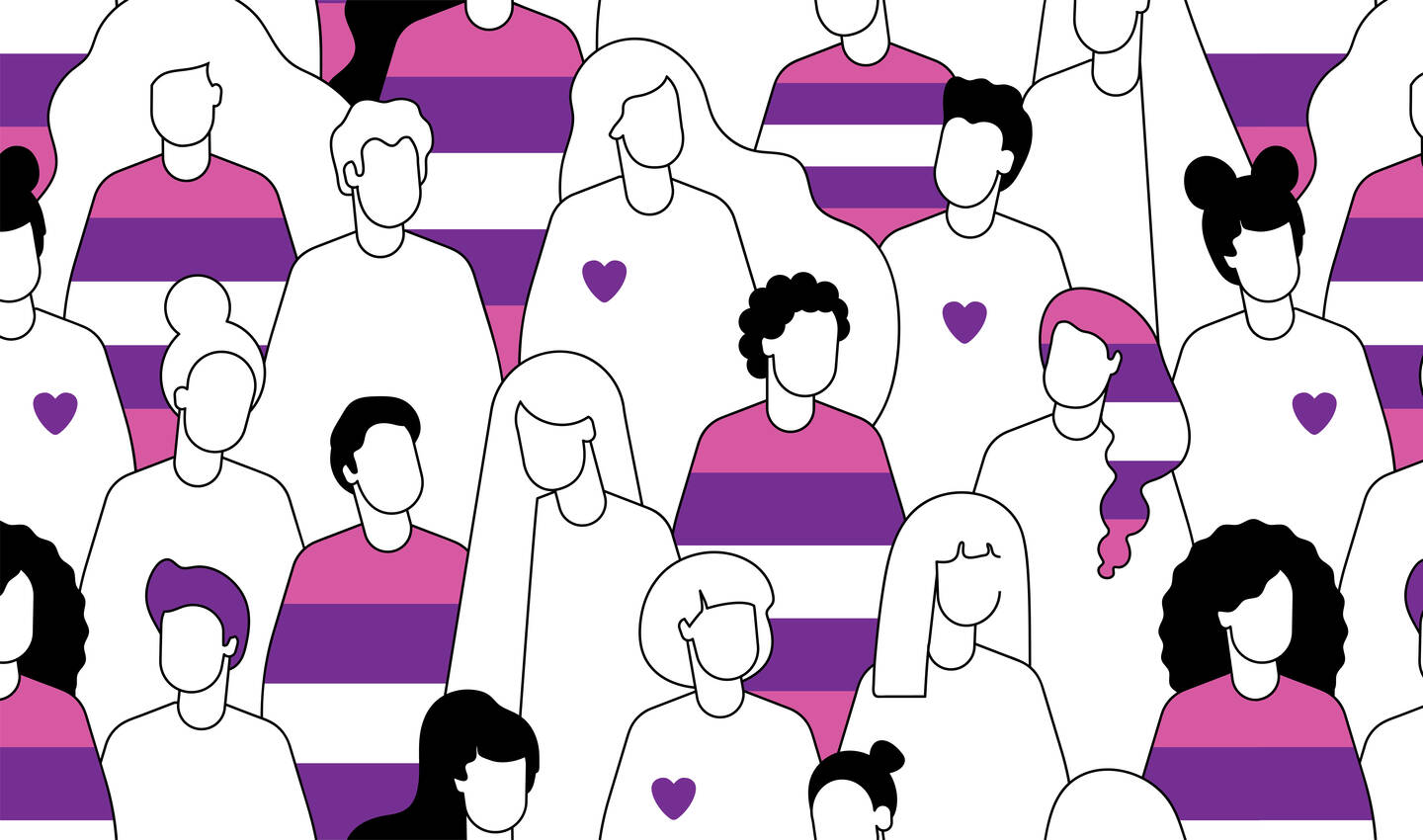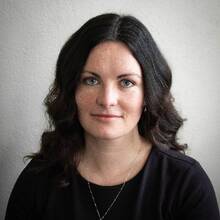Editor’s note: On both religious and secular levels and in seemingly every corner of the United States, debates about gender identity and gender theory have become more prominent—and more contentious—in recent years. This summer, America asked two professors of theology with backgrounds in gender studies, Abigail Favale of the University of Notre Dame and Elizabeth Sweeny Block of St. Louis University, to respond to the 2019 Vatican instruction from the Congregation for Catholic Education, “‘Male and Female He Created Them’: Towards a Path of Dialogue on the Question of Gender Theory in Education.” After both scholars offered their thoughts on the Vatican instruction, America then invited each to respond to the other. The following texts represent this exchange. The conversation will continue online at americamagazine.org.
A Truly Catholic Approach to Gender
A consistent theme in the writings of Pope Francis throughout his pontificate has been a critical stance toward gender theory. The question of gender is intimately connected to his concerns about the technological domination of nature and the need to cultivate an integral ecology—an ecology that sees the human person as part of the created order. “Learning to accept our body, to care for it and to respect its fullest meaning, is an essential element of any genuine human ecology,” he wrote in “Laudato Si’.” The 2019 instruction from the Congregation for Catholic Education, “‘Male and Female He Created Them’: Towards a Path of Dialogue on the Question of Gender Theory in Education,” relies heavily on Francis’ encyclicals and addresses, primarily “The Joy of Love,” as well as the writings of his two papal predecessors. The last three popes, it seems, speak in unison on this theme.
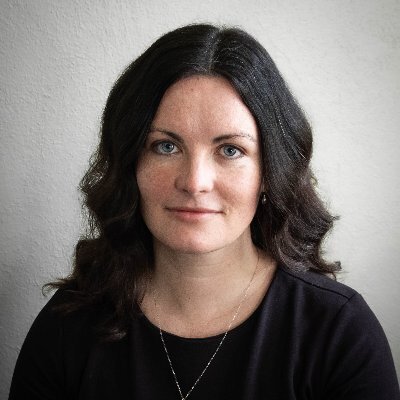
The basic methodology of “Male and Female He Created Them” is a good one: Listen, reason, propose—with the aim of meaningful dialogue. One special benefit of being Catholic is the invitation to approach any idea or text with a spirit of generous curiosity: What truth will I find here? Yet even as we seek shared ground, we have to be honest about the deep fissures between the implicit worldview of gender theory and a Catholic understanding of reality. These two ways of seeing diverge sharply when it comes to conceptions of reality, anthropology, sexual difference, embodiment, language and freedom.
Where I see the most synergy between the Catholic paradigm and the gender theory paradigm is in their shared desires: the desire for body-soul unity, the desire for the body to reveal the person, the desire for rebirth, the desire for belonging. The path of accompaniment through the precarious terrain of gender might have to happen along these currents of shared desires, these good desires.
This summer, amid a growing debate about gender identity in the United States, America asked two professors of theology to revisit the 2019 Vatican document on “‘gender theory in education.”
But the ultimate problem of the gender theory paradigm is that it makes promises it cannot fulfill because it is built on a false anthropology. Or perhaps it is more accurate to say it is built on false anthropologies, because there are several on offer. All of them, however, reject the idea that there is a givenness to the created order, especially to our sexed bodies—and I mean “given” both in the sense that we have an intrinsic nature and that this nature is a gift.
The Catholic view of the body, as articulated by John Paul II, Benedict XVI and Francis alike, is at odds with that of gender theory, which sees the body as a tabula rasa, waiting for extrinsic meaning that can only be inscribed by the desiring will and/or institutional power.
In the Catholic view, being a man or a woman is personal reality—meaning it refers to the totality of the person. Gender thus includes the body but cannot be reduced to the body: A person is a biological-psychological-spiritual unity, one who is time-bound, embedded in history and culture. We are sexed beings; that is part of what it means to be human, and our sexed nature is the ground of our personhood and also a sacramental sign of our ultimate purpose: to give and receive love.
Many assume that speaking of the reality of sexual difference—maleness and femaleness—necessarily ignores those who are born with congenital conditions that affect sexual development, also known as “disorders of sexual development” (DSDs). There are over two dozen discrete conditions that fall under the canopy of DSDs, and each is different in its impact on one’s health and the best therapeutic response. The oft-used label “intersex” is an outdated and imprecise term; DSDs is better, but the best terminology is condition-specific (e.g., “a man with Klinefelter’s syndrome”).
The claim that the existence of DSDs upends the sex binary is dehumanizing, because it implies that a person with a DSD is something “other,” exempt from the reality of maleness or femaleness altogether. In fact, many DSDs are sex-specific, and the vast majority do not involve any apparent sexual ambiguity at birth. Those that do are exceedingly rare (0.02 percent of all births), and in these cases, the focus must be on supporting the individual’s unique needs.
The church needs to be clear and informed on this question because of the confusion that abounds.
The church needs to be clear and informed on this question because of the confusion that abounds. Moreover, the church, because of its defense of bodily dignity and integrity, can be a powerful voice against the practice of infant genital mutilation—invasive surgeries on babies born with a DSD that are harmful and medically unnecessary.
A truly Catholic approach to gender must also take a more global scope, and this effort is clear in Pope Francis’ writings. A framework that actively seeks to erode sex-based categories can be readily imbibed by wealthy, cushioned, laptop elites—but it will not speak to the experiences of most people in the world, especially most women, whose lives are very much contoured by the facticity of femaleness.
Increasingly, the United States and Canada are outliers; Europe is pulling back from letting purveyors of gender identity theory set the protocols for caring for gender-questioning youth. In Sweden, which has been a pioneer in the development of medicalized gender transition, the government issued new recommendations in February for addressing pediatric gender dysphoria. After conducting a systematic review of all available scientific evidence, the Swedish government concluded that the risks of puberty blockers and cross-sex hormones outweigh the possible benefits and that hormonal treatment for young people should be sharply curtailed.
Similar course corrections are happening across Europe; countries such as France and Finland are urging caution, paying greater attention to scientific evidence and prioritizing psychotherapeutic interventions for young people. In July of this year, Britain’s National Health Service announced that it is shutting down the Tavistock gender clinic after an external review concluded the clinic had failed in its care for vulnerable youth. Tavistock will be replaced by regional clinics that take a holistic approach and prioritize mental health support. The United States, in contrast, is charging ahead, at least at the federal level, while certain states are attempting to ban medical transition for young people. In America, this contentious debate is fueled by the ever-renewable resource of political polarization and a profit-driven health care system.
The church in this historic moment has both a duty and an opportunity to speak the truth about the human person, the goodness of the body and the sacramental meaning of sexual difference. In its high regard for the body, the church is also in a position to welcome the full range of human personality. When gender is seen as sex-lived-out, grounded in the sexed body, it is no longer defined by rigid stereotypes about how men and women should look, feel, be and behave. A boy who would rather knit a scarf than throw a football is just as much a boy, just as authentically masculine, as a star quarterback. This is because the male body, not a particular affectation or trait, is the ground of masculinity. The church must avoid the temptation to, in a panic, reassert pink versus blue scripts about gender.
We must be willing to walk alongside those who are questioning, even as we profess the beauty of the Catholic way of seeing.
Pope Francis’ statements on gender, as well as the “Male and Female He Created Them” document, should be read as addressing the framework of gender theory and not as a wholesale rejection of persons who might adopt that framework for a range of different reasons. No two stories are ever the same. The church needs to hold onto a distinction between individuals with complex, varied experiences and the dominant framework(s) that interpret and shape those experiences.
While this is a difficult distinction to make when we are talking about frameworks of personal identity, it is an essential one to hold. When it comes to ideas, the church must patiently yet boldly speak the truth. When it comes to people, the church must be attentive to the person, to the desires, wounds and experiences that are being expressed.
To give one practical example of how this balance could be lived out: Perhaps a priest could give a homily on the beauty of Catholic anthropology and the view of sexual difference expressed in the creation accounts in Genesis. According to these accounts, our sexed modes of being human are the pinnacle of creation, the final flourish. Then, at the end of this homily, the priest could issue an invitation to those who question their gender or identify as transgender: I’m glad you are here. Please come say hello; I would love to hear more about your perspective and experience.
We, laity and clergy alike, must be willing to walk alongside those who are questioning, even as we profess the beauty of the Catholic way of seeing. That is the tightrope the church has to walk in this moment—with tenderness and grace, but also with firm steps.
Abigail Favale is a professor in the McGrath Institute for Church Life at the University of Notre Dame. Most recently, she is the author of The Genesis of Gender: A Christian Theory (Ignatius, 2022).
Genuine Listening
More than three years have passed since the Congregation for Catholic Education published the Vatican’s singular statement to date on questions of gender identity, intended to guide and support Catholic educators, including families and lay organizations. In “‘Male and Female He Created Them’: Towards a Path of Dialogue on the Question of Gender Theory in Education,” the congregation turns its attention not to persons who are transgender and nonbinary but, more abstractly, to criticism of “gender theory” and “gender ideology.” The document understands this as “an ideology that...denies the difference and reciprocity in nature of a man and a woman and envisages a society without sexual differences.”
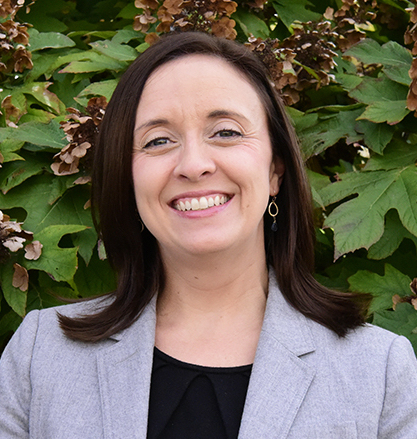
The text focuses its criticism on theory and beliefs about gender, with no attention to people’s lived experiences and questionable reliance on science. As states across the United States introduce legislation that profoundly affects transgender individuals, and given the ongoing discrimination and pain endured by transgender youth and adults alike, this document is worth revisiting to consider its strengths, address its failures and suggest next steps for the church.
It is difficult to find strengths in this document. It acknowledges that sexual differences between men and women vary in distinct cultures. This recognition of diversity, however minimal, is important. It also emphasizes the significance of our bodies. Bodies are indeed important parts of our personal identities and relationships—both more and less important than they are often made out to be.
The document also insists that children should be taught “to respect every person,” which is certainly true, but this strength is diminished by the caveat to welcome specifically “legitimate expressions of human personhood,” which implies not actually welcoming everyone. Any small steps forward are overshadowed by glaring omissions and misplaced blame. I will focus on three: the absence of genuine listening, the mistaken claim that radical autonomy is to blame for the existence of transgender and nonbinary people, and the lack of engagement with science.
The document is divided into three parts, based on actions suggested for both individuals and communities. The first of these is to listen “carefully to the needs of the other, combined with an understanding of the true diversity of conditions.” Despite this objective, one of the greatest failures of this document is the absence of true listening, except to “cultural events of recent decades,” and then only filtered through the perspective of the Congregation for Catholic Education.
“Listening” here consists of describing schools of thought that deny the givenness of our sex and therefore our gender identity, thereby eroding the biological basis of the family in favor of “a vision of the family that is purely contractual and voluntary.” Such a claim assumes that gender theory aims to dissolve all differences among persons, which is simply not true. “Listening” without actually hearing the stories of transgender and nonbinary persons yields the mistaken conclusion that confused concepts of individual freedom, free self-determination and radical autonomy are to blame for the existence of transgender and nonbinary persons.
Genuine listening requires meeting transgender and nonbinary people where they are, hearing their stories, struggles and experiences of God.
Genuine listening requires meeting transgender and nonbinary people where they are, hearing their stories, struggles and experiences of God, understanding their journeys as best we can and being open to being formed by these encounters. The church must engage lived experiences along with scripture, tradition and reason. After all, each of these sources depends on and exists because of lived experiences.
The absence of genuine listening leads to the erroneous conclusion that the goal of “gender theory” is a society without sexual differences and that a false sense of freedom is to blame. “A confused concept of freedom in the realm of feelings and wants, or momentary desires provoked by emotional impulses and the will of the individual” are cited as the cause of gender nonconformity.
Catholicism has long held, and rightly so, that freedom is not limitless autonomy but rather is linked with and dependent on truth and other values, such as fidelity, goodness and relationality. The “Pastoral Constitution on the Church in the Modern World”asserts that freedom is perverse when it is used as a “license for doing whatever [one] pleases,” in contrast to “authentic freedom...[which] is an exceptional sign of the divine image in man.” Human dignity necessitates that persons “act according to a knowing and free choice that is personally motivated and prompted from within, not under blind internal impulse nor by mere external pressure.” Genuine freedom is freedom for the good and the just, and the choice to do evil is an abuse of freedom.
In “The Joy of Love,” Pope Francis shares these same concerns about limitless autonomy, but he also equates authentic freedom with an “openness to what is good, true and beautiful, or our God-given ability to respond to his grace at work deep in our hearts.” I share the church’s concern about freedom that ignores our relationality and the flourishing of all, but this concern is misplaced with respect to transgender people and their supporters.
Moreover, it is unfair and unjust to accuse transgender and nonbinary people of an abuse of freedom without having listened to them. Transgender individuals describe feeling relief and affirmation as well as a sense that they are no longer fighting but rather following God’s will. This is not the careless, reckless autonomy described in “Male and Female He Created Them,” nor are these decisions about gender identity made lightly. These are decisions of conscience.
It is unfair and unjust to accuse transgender and nonbinary people of an abuse of freedom without having listened to them.
Third, the document asserts the inseparability of sex and gender and an inflexible understanding of “biological sex” that ignores the diversity and complexity of human beings. The document states that a “person’s sex is a structural determinant of male or female identity,” as if these are universal identities with stable characteristics, such as “women’s capacity for the other” and women’s central role in education.
The church ought to listen also to the science that tells us that a person’s sex is more complicated than what is indicated by external genitalia and X and Y chromosomes. Sex traits are complex and nonbinary, and include genes, chromosomes, hormones, external primary sex characteristics, secondary sex characteristics and more. These traits certainly have something to do with one’s gender but in much more complicated ways than the document conveys.
Transgender and nonbinary persons and proponents of gender theory are not trying to negate difference. Rather, they are revealing to us that difference is messier than any binary can reflect. The differing gifts and qualities that each person brings to relationships are essential, but surely our biological features and sex characteristics are not the most important thing about us.
Time and again, biology is treated as the primary measure of just relationships. Sex and gender are not as straightforward as implied in this document. The church would do well to engage scientists, anthropologists and sociologists, who can provide necessary insights, and to consider that biology is only one piece of human relationality.
These next steps require all members of the church to proceed with humility and a willingness to listen and learn, one from the other.
Elizabeth Sweeny Block is an associate professor of Christian ethics at Saint Louis University. She is writing a book on conscience, moral agency and social sin.
The Truth Beyond Ourselves
Professor Sweeny Block and I have differing assessments of the document from the Congregation for Catholic Education—but we do have points of commonality, such as the need to listen to experiences of gender variance, as well as to science. We follow these points to different conclusions, however, so I would like to use this response as an opportunity to explore why.
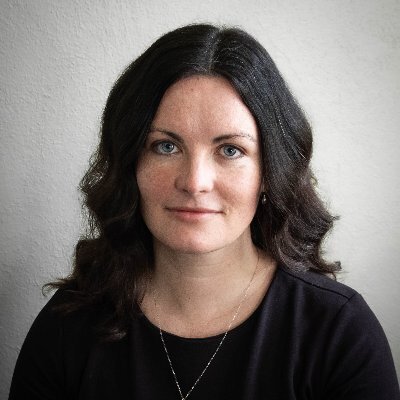
Professor Sweeny Block criticizes the C.C.E. document for focusing on “theories and beliefs” about gender, rather than the “lived experiences” of persons. This bifurcation overlooks the fact that our experiences are refracted through the cultural frameworks on offer. This is something that gender theory gets right. Gender nonconformity is not new—just look at the saints, how often they thwarted convention—but the concept of subjective “gender identity” and a medicalized approach to gender incongruence are both historically novel, part of a recently emergent paradigm that has come to profoundly shape our self-perceptions.
True accompaniment requires listening to both lived experiences and the frameworks that filter them. I agree with Professor Sweeny Block that the church needs to engage the dimension of personal experience along with Scripture, tradition and reason. Where perhaps we diverge is that I would not place all of these at the same level of authority. Every conscience, every human heart, needs formation. We should be formed according to God’s self-revelation, not vice versa. This is where I part ways from the gender theorists: Cultural frameworks can shape our perceptions of reality, yes, but reality nonetheless exists. There is a ground of truth beyond ourselves, and there are good and bad frameworks of interpretation.
True accompaniment requires listening to both lived experiences and the frameworks that filter them.
Professor Sweeny Block is correct that the goal of gender theory is not the dissolution of difference. More precisely—and the C.C.E. document recognizes this—gender theory is a project of denaturalization. The goal is to unmask what we commonly think of as natural and reveal it as always already social. In second-wave feminist theory, this happened with the norms and behaviors associated with sex, and often rightly so. Then, through the third-wave innovations of scholars like Judith Butler, this happened with sex itself. The sex binary, upon which the existence of our species depends, is now regarded as a social fiction rather than natural.
Professor Sweeny Block invokes the now common characterization of sex as a smattering of discrete and variable characteristics—a distortion that overlooks the fact that these characteristics are unambiguously arranged according to two distinct procreative modalities in 99.98 percent of the population. Some sexual characteristics fall along a spectrum, that is true. But sex as the totalizing structure of an organism is binary, and that is true for all sexually reproducing species. The cultural norms attached to sex are variable. Sex itself is remarkably stable. The C.C.E. document could have elaborated on this point more clearly, but it does correctly describe sex as a “structural determinant,” emphasizing the need to regard the totalizing structure of the body as a whole, not characteristics in isolation.
This fragmentary understanding of sex is itself, I would argue, already filtered through gender theory’s project of denaturalization. “Listening to science” and “listening to experience” cannot be neatly separated from an analysis of the ideas that are implicitly, and always, mediating our narratives of self-understanding. - Abigail Favale
Revisiting Catholic Anthropology
Abigail Favale offers a very optimistic read of “Male and Female He Created Them,” made possible in part by connections she makes between this document and the writings of Pope Francis and his two predecessors.
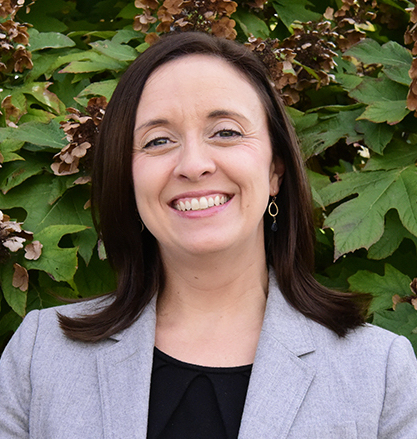
But in order for Dr. Favale to see the good in this Vatican document, she necessarily turns away from the words of “Male and Female He Created Them.” Indeed, there is some good happening in the church. For instance, Pope Francis has met with transgender persons four times in recent months. In a letter to James Martin, S.J., about Father Martin’s outreach to L.G.B.T. communities, Francis encouraged a “culture of encounter,” which “enriches us with differences.” However, it remains difficult for me to see this kind of encounter or appreciation for differences present in the Congregation for Catholic Education’s document.
Dr. Favale identifies opposing realities that the church must preserve. First, there is a difference between “the worldview of gender theory” and “a Catholic understanding of reality.” Additionally, the rejection of the framework of gender theory and certain ideas is distinct from the rejection of persons, which is never appropriate.
I appreciate Dr. Favale’s concern for persons with varied experiences, something not taken seriously in “Male and Female He Created Them,” and her pushback against rigid stereotypes. Yet the “Catholic way of seeing,” which did not arise from nowhere and has been influenced by contexts and cultures, can and ought to continue to be informed by experiences and in dialogue with secular theories.
Ideas have real consequences, and they can harm and exclude.
Moreover, ideas have real consequences, and they can harm and exclude. Dr. Favale suggests more encounters between priests and transgender or gender-questioning parishioners—a very important step—but ideas matter to how people see themselves and how welcome they feel. It is hard to imagine feeling genuinely invited into dialogue on the heels of a homily that presents a framework that discounts a person’s lived reality.
Instead of asking transgender persons to meet on our terms and fit into our paradigms, could we do more to take seriously their realities? Could the church step out of its comfort zone? Could the church adopt a genuine posture of humility and an openness to learning?
Theologians who take gender theory seriously can still do so through a theological lens. We can learn from gender theory and still reject the idea that bodies, sex and gender are unimportant or that gender should be eradicated. The Anglican theologian Sarah Coakley has something to teach us when she rightly warns that applications of gender theory can be distorted and potentially sinful, and yet theology that fails to make critical and discerning use of social science is far removed from “actual lived religion.” As I noted in my opening remarks (Page 39), embodied difference matters, but difference need not be reduced to the male/female gender binary.
The givenness of the created order, that it is a gift from God, is not rejected when one takes the concerns and lives of transgender persons seriously. Indeed, transgender bodies are gifts from God.
However, the givenness of creation does not mean that gender, or human nature more broadly, is static, nor is the givenness of creation or human flourishing limited to physical bodies, important as they are.
Moreover, what is natural and given cannot be understood in the abstract but must necessarily attend to and draw from the experiences of all, including transgender persons. St. Thomas Aquinas recognized that knowledge begins with experience. The ends or purposes of creation may be generally known, but practical experiences—in conversation with Scripture and tradition—reveal still more information about the human and what constitutes human flourishing. We need an anthropology, but we also need to question Catholic anthropological claims about human nature and discern whether they continue to hold true.
The laity and clergy alike do need to walk alongside transgender, nonbinary and gender-questioning persons, but our steps ought to be less firm and more informed by our own humility. - Elizabeth Sweeny Block

